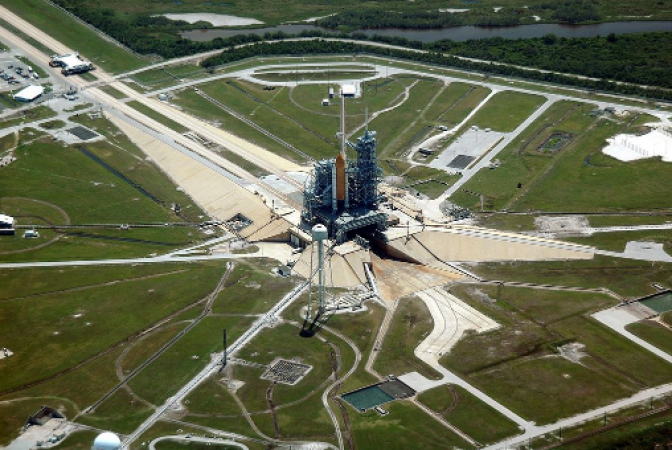
USA: Launching satellites into orbit is risky business. There are still few orbital test vehicles available, sensor and payload technology is still in its infancy and constantly evolving, and some orbital systems are becoming increasingly congested.
Of course, insurers are no strangers to risk.
The space insurance business has been around for 60 years. But in recent years, geopolitical tensions in space, militarization of the region and growing concerns about the danger of orbital debris have led to a sharp increase in the number of objects placed in orbit.
Also Read: Musk threatens to block fake Twitter users
The 2022 edition of the World Economic Forum's Global Risk Report highlights space as a major risk area. The WEF has warned in its report that the greater number and diversity of actors working in space could lead to conflict if space exploration and exploitation is not managed responsibly. The risks are increasing as there is inadequate and outdated global governance system to control space along with various national level policies.
Analysts are concerned about about a million debris in orbit that are more than a centimeter in diameter, as well as the increasing frequency of human spaceflight, geopolitical risks and other factors. In the WEF's Global Risk Perception Survey, 76% of participants said that international efforts to reduce risks in space either did not exist or were in their infancy.
Insurance companies continue to cover satellite operators despite the high-risk and often high-reward nature of the space environment. The high risk makes it more difficult to navigate the environment and calculate premiums. But according to industry insiders, a lot of money could come from creating clever policies for the space players.
By US law, the launcher must obtain liability insurance for each mission that covers the launch team and operator.
However, it is a completely different story for satellite operators. According to Patton Kline, senior VP of aviation and space practice at Marsh, "companies in the U.S. really don't require regulators to purchase any type of liability insurance at this time."
Also Read: Labour's exodus hits iPhone capacity in Foxconn
Depending on where the business is headquartered, satellite operators may or may not be required to purchase insurance. For example, regulators mandate that satellite operators in the EU and UK purchase liability insurance for their satellites.
On the insurance provider's side, space offers the opportunity to profit from a specific risk environment that is completely different from Earth conditions.
Dennis Bensson, head of space at London-based insurance company Beazley, says that "location as a line of business for an insurance company is very interesting, as it does not belong to any other class of business." Every aspect of a general insurer's portfolio can be affected by a natural disaster on Earth. Space assets can fill up when other businesses of the insurer are facing claims because they are not affected by topological factors.
Owners of geosynchronous satellites have long sought insurance for their satellites. In 1965 Lloyds of London issued the first space insurance contract.
The Outer Space Treaty was made available for signature by the US, UK and Soviet Union in 1967. Later that year, the settlement became operational. Under Article VII of the Treaty, the launching State is liable for any damage caused to its space property to citizens of another signatory State. Damage to the property of another nation is not covered by this treaty.
Due to the introductory and hazardous nature of the technology, premiums for space asset coverage have historically been high. These can be 10-20 times more expensive than the aviation premium.
However, between 1960 and 2010, premiums fell from 5 to 20% of the cost of the policy, depending on the insurer and specific systems of assessment. Premiums declined steadily from 2002 to 2019, with the exception of a minor blip in 2007; However, margins for the space insurance industry continued to shrink.
But as we approached 2020, things started to change. Losses exceed gross premiums in 2018 and 2019, with total losses in 2019 approaching $800 million, while gross premiums valued at $400–450 million. According to Kline, "which basically doubles and triples the premium in some cases in a very short amount of time."
The losses in 2019 were mainly due to some notable failures. In August, a Chinese satellite's failure to deploy its solar panels in orbit cost insurers nearly $250 million.
The failure of the Vega launch resulted in the largest space insurance loss ever, costing $414 million. Two additional failures resulted in a further $200 million in damages. In early 2020, the radio satellite SXM-7 broke down, resulting in a loss of $225.
When it first announced that it would no longer cover satellites in LEO, with the exception of a few policies that excluded collision coverage, Assure Space, a prominent space insurer, caused a stir.
Also Read:These IPOs hit primary market this week
Since 2019 (though it was a razor-thin margin in 2020), the insurance sector has made money on space policies, and premiums have retreated to about 5-20% of the policy value. Due to new entrants in the space industry, the capacity of the insurance industry has returned to pre-2019 levels this year.
The space industry is at a turning point, as we frequently say. The industry anticipates that the gravy train will continue to run in the upcoming years. Over the next ten years, launches will increase in frequency, new medium- and heavy-lift rockets will enter service, and tens of thousands of new satellites will occupy Earth's orbit.
The market for space insurance is also about to change. Bensoussan asserts that operators will eventually come around to the idea of purchasing satellite insurance as the LEO market develops and starts to generate revenue.